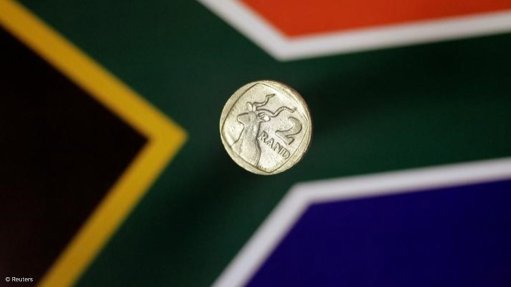Power vacuum
Eskom’s COO, Jan Oberholzer, is going to retire in April 2023, which is about five months from now. He has been working for the State-owned electricity utility for over 30 years. This is to be expected. After all, not everybody can work forever, and everybody needs a break.
It is a particularly bad time for Oberholzer to leave. He has all the things that we need in an operating officer: integrity, a strong work ethic, excellent knowledge, experience, et cetera. It is going to be very difficult to replace him; offhand, I cannot think of any suitable candidate.
In the worst-case scenario, the replacement officer is overpriced, incompetent and corrupt; in the best-case scenario, perhaps a subset of the above. Perhaps I’m being unkind; perhaps Eskom has lined up an excellent COO and things will only improve. Judging by Eskom’s recent performance, this seems to be unlikely.
It is Eskom’s performance which we have to worry about. The CEO, André de Ruyter, has only been with Eskom for two years; so, he does not adequately support the departure of Oberholzer. There is nobody else that can fill the gap. Right now, there is no record as to who might replace Oberholzer, or if indeed he will be replaced.
One thing for sure is that Eskom will use the opportunity of Oberholzer’s departure to increase staff numbers. This increase will, as is the nature of Eskom, increase costs. Eskom has been doing this for some time now. It can be hoped that De Ruyter will prevent this from happening, but there is no guarantee.
Eskom is an interesting organisation. It is neither fish nor fowl. Over the years, it has been a unique organisation which ran itself as a quasigovernment entity. Today it is not government owned. The fact is that the ownership of Eskom is so vast that for it to be transferred to a single organisation would require a great wealth transfer and it is not clear from where such wealth would be found. As long as Eskom is run in such a fashion, it is a sort of private Pty Ltd with a sort of joint ownership. Because of this, while it is run in a reasonably satisfactory manner, there are still regulatory issues which are not dealt with fully.
Sometimes we must look back to ancient Greek mythology. Specifically, we must remember that it took more than one person to kill the multiheaded hydra, who regrew two heads for every one cut off. In the case of Eskom, to create a group of Eskoms, all of which are more or less the same, will merely require some smart financial work. The financial work does not have to be particularly accurate, nor does it have to meet some requirement to make people make some money or not. All that has to be done is to remove from Eskom the problem that it has right now, which is the regulation of it by a whole series of rules, to produce a working organisation.
Whichever direction they take Eskom, and no matter if they increase the money paid to the various employees, one thing is probably inevitable: if you pay the Eskom staff enough, they will probably do their job well enough to prevent themselves being fired and well enough to prevent the jobs falling apart at the end. It is a fact that, down the line, Eskom is going to come apart, not deteriorate completely, but to be divided into pieces and it is better that this happens in an orderly fashion rather than any other way.
Right now there are many people who are predicting the future of Eskom and are very despondent that Eskom is implementing loadshedding every day, sometimes twice a day or more. There is a mistaken belief that this is because Eskom has a power system which is broken and near the end. Thanks to Oberholzer, who has worked hard for the last 30-plus years and has on many occasions been reliable, honest and sometimes amusing, this is not true.
Article Enquiry
Email Article
Save Article
Feedback
To advertise email advertising@creamermedia.co.za or click here
Comments
Press Office
Announcements
What's On
Subscribe to improve your user experience...
Option 1 (equivalent of R125 a month):
Receive a weekly copy of Creamer Media's Engineering News & Mining Weekly magazine
(print copy for those in South Africa and e-magazine for those outside of South Africa)
Receive daily email newsletters
Access to full search results
Access archive of magazine back copies
Access to Projects in Progress
Access to ONE Research Report of your choice in PDF format
Option 2 (equivalent of R375 a month):
All benefits from Option 1
PLUS
Access to Creamer Media's Research Channel Africa for ALL Research Reports, in PDF format, on various industrial and mining sectors
including Electricity; Water; Energy Transition; Hydrogen; Roads, Rail and Ports; Coal; Gold; Platinum; Battery Metals; etc.
Already a subscriber?
Forgotten your password?
Receive weekly copy of Creamer Media's Engineering News & Mining Weekly magazine (print copy for those in South Africa and e-magazine for those outside of South Africa)
➕
Recieve daily email newsletters
➕
Access to full search results
➕
Access archive of magazine back copies
➕
Access to Projects in Progress
➕
Access to ONE Research Report of your choice in PDF format
RESEARCH CHANNEL AFRICA
R4500 (equivalent of R375 a month)
SUBSCRIBEAll benefits from Option 1
➕
Access to Creamer Media's Research Channel Africa for ALL Research Reports on various industrial and mining sectors, in PDF format, including on:
Electricity
➕
Water
➕
Energy Transition
➕
Hydrogen
➕
Roads, Rail and Ports
➕
Coal
➕
Gold
➕
Platinum
➕
Battery Metals
➕
etc.
Receive all benefits from Option 1 or Option 2 delivered to numerous people at your company
➕
Multiple User names and Passwords for simultaneous log-ins
➕
Intranet integration access to all in your organisation
















